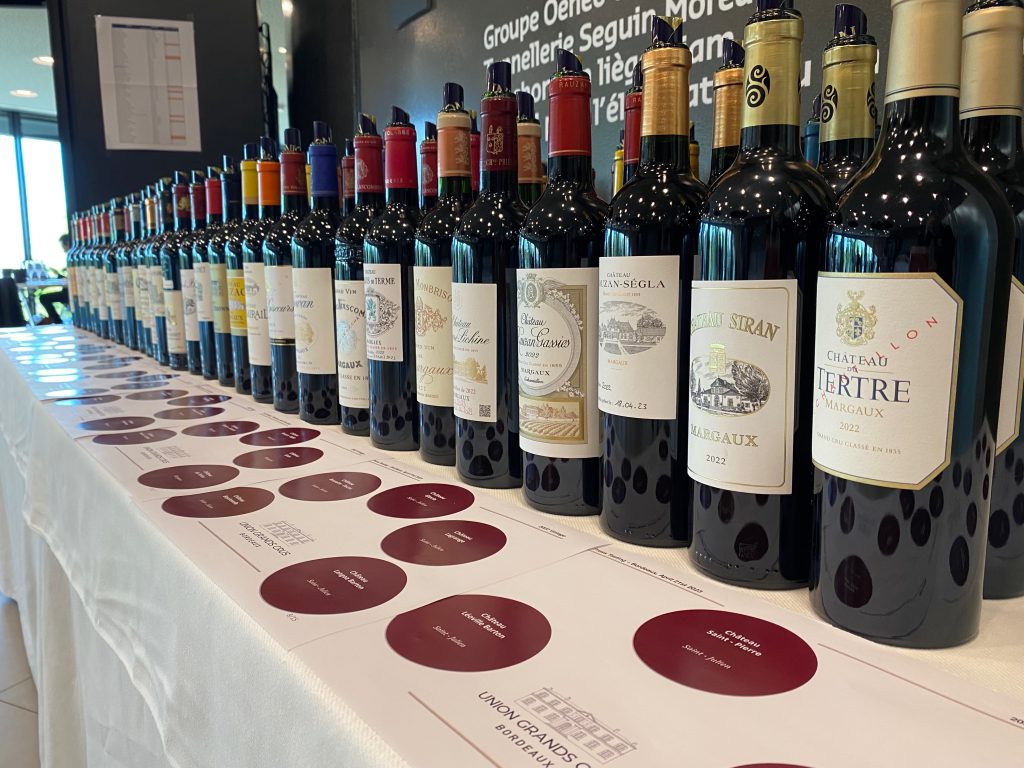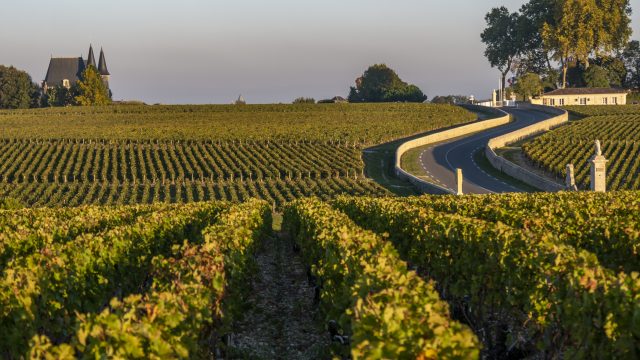This website uses cookies so that we can provide you with the best user experience possible. Cookie information is stored in your browser and performs functions such as recognising you when you return to our website and helping our team to understand which sections of the website you find most interesting and useful.
Bordeaux 2023: en primeur system ‘at breaking point’
On the eve of the en primeur tastings, our Bordeaux correspondent Colin Hay sets the scene for a campaign that is likely to take place in the worst market conditions in over a generation and asks what can be done.

‘We need to talk about prices’
Spring is sprung. The March hors Bordeaux campaign is over. Yquem is released. And attention now turns to en primeur. There is nothing unusual about that. But this year is different; and it is not going to be easy. Arguably we have never before faced such a make-or-break campaign. Hyperbolic though it sounds, the very future of en primeur is itself at stake. This time is for real.
Yet, interestingly, and you might think surprisingly, this has almost nothing to do with the quality of the vintage – except other than in the sense that if the vintage were not anticipated to be of significant quality we wouldn’t even be having the conversation. Put bluntly, this is likely to be seen as a good enough vintage that it should – in theory – work en primeur; if it does not, the very institution of en primeur itself is threatened, perhaps as never before.
In the first of a two-part analysis, I will first set out a few facts about the current market situation (in short, bleak) and some thoughts about what to expect from the campaign to come. Part 2 will explain in a little more detail how we have found ourselves in this situation (by way of the situations facing a hypothetical estate and its négociant), concluding with a general set of reflections on the implications for the post-en primeur recalibration that is likely to follow.
Bordeaux en primeur: the facts
- Bordeaux faces the worst market conditions in over a generation, conditions that have persisted as they have worsened now for more than a year. In this, of course, it is hardly alone – this is a crisis in and of the entire fine wine market. But Bordeaux is a leader and en primeur provides it with an opportunity to lead if it chooses to take it.
- The situation is significantly worse that it was when the 2022 vintage was released – a campaign that can hardly be adjudged a great success (despite the enthusiasm of the critics) and which failed to establish a stable secondary market price for the vintage.
- However, there is a much greater, collective understanding in Bordeaux of the situation and the need to ensure that history does not repeat itself. Bordeaux is better prepared than last year – but, quite simply, it needs to be.
- A number of the leading courtiers and, more significantly, a number of the leading properties are already seeking to impose market discipline through the coordination of release pricing and, indeed, the sequencing of this during the campaign. This is never easily achieved, but it has happened before and there are precedents for its success – above all, with the 2019 and 2008 vintages (see below).
- La place de Bordeaux is in crisis. Some négociants find themselves already in severe financial difficulty – unable to service the accumulated debt associated with the rising costs of borrowing and storage on the one hand, and the reduction in the volume of transactions since the 2019 en primeur campaign on the other.
- Up until now (and with some exceptions for the 2022 vintage), the négociants have been absorbing the financial risk of en primeur – typically taking their allocations of leading wines even where they have been unable to sell them through. Many of them can no longer afford to do; those that can are no longer prepared to do so.
- These négociants also hold in storage an unprecedentedly high volume of accumulated stock (enough to service demand for between one and two full years).
- The market is presently stalled, at least in part, because it is waiting for en primeur – a potentially market redefining moment. The spring hors Bordeaux releases took the brunt of this, though the market may well return to them once Bordeaux 2023 is released.
- Unusually, the final composition (encépagement) of many of these wines has yet to be finalised. There are technical reasons for this (some consultant oenologists tell me that the wines continue to evolve significantly in oak and that a late assemblagement is needed), but there may well also be financial reasons at play too. It is credible to think that, above all in the context of a generous vintage (with yields high), properties are now deciding between degrees of strictness in the selection for their grands vin on the basis of how much they might credibly think they can sell and at what price.
- In 2008, in not dissimilar market situation, it was Robert Parker who saved the 2008 en primeur campaign. He did so by publishing controversially high ratings (placing the vintage practically on a par with 2005) half-way through an already floundering campaign that had started with the first growth reducing their prices by over 50% with respect to 2005 and 2006 (over 60% in sterling-equivalent terms). Crucially however, no-one today has either his influence or his warmth for Bordeaux, or more accurately, no-one with influence today has his warmth for Bordeaux and no-one with his warmth for Bordeaux has influence!
- The inference to draw from this is that now, Bordeaux has to save itself. Crisis, as all good students of political economy (and of Bordeaux too) know well, is the mother of invention. It accelerates, for good or ill, the evolution of markets and the institutions (here those of La Place) that govern them. A lot is likely to happen in the next two months and the consequences are likely to be enduring.

So what can we expect?
- A re-run of 2019? Yes and no. The 2019 vintage, you will recall, was released in the midst of the Covid epidemic, with great uncertainty as to how this would influence demand. In adversity, Pontet Canet released early and low (supported by a potential 100 points from Lisa Perrotti-Bown, then at the Wine Advocate). Others followed, notably and crucially Cheval Blanc. The effect was to give a clear price signal to the market which, because it was largely followed, resulted in the last genuinely successful en primeur Something similar could happen again, with price signalling from leading properties kick-starting the campaign. However, potential demand in 2020 turned out to be significantly higher than it is today. In short, there is no guarantee that a similar strategy would yield similar results.
- A re-run of 2008? Yes and no. More credible perhaps as a market analogy is the comparison with the 2008 vintage, released in the immediate aftermath of the global financial crisis [see here for a detailed analysis]. Here it was the first growths, acting together, who gave the price signal to the market – essentially by halving their release prices in the process. The market largely followed (with average reductions in price of closer to 40% in comparison with the 2005 and the 2006 vintages). But it was the intervention of Parker, publishing his highly enthusiastic ratings of the vintage half-way through the campaign, that was really responsible for its success. But today is different. For, in the absence of Parker or a Parker-like effect, Bordeaux will have to save itself if Bordeaux 2023 is to be a success.
- Such comparisons notwithstanding, it is credible to imagine reductions in release prices (for first tranches) of at least 30% relative to those for the 2022 vintage in euros or, indeed, in sterling (with sterling having appreciated only marginally with respect to the euro over the last year).
- At this implies, from the leading wines we are also likely to see ‘tranching’ (the release of allocations in batches, with the relative price of each successive tranche determined by the success or failure of its predecessor).
- For the campaign to get off to a positive start, the first releases will have to work. For that to be the case they will need to be both early and, crucially, symbolically low. They need, in effect, to be able to give a clear and unambiguous price signal to the market that is capable of establishing the parameters of acceptable behaviour for those to follow.

Recalibration required
- Whether the campaign is a success, a partial success or a failure, it will surely prompt a post-en primeur reassessment and recalibration. The market has stalled over the last few months in anticipation of the campaign to come, with a number of négociants for instance refusing or reducing their hors Bordeaux allocations (even those that are tiny in the context of their overall financial year) simply to give themselves maximum leeway to take a position in the en primeur campaign to come. That reveals both a certain confidence in the vintage and its potential pricing (the idea that things could go well) and an anxiety born of financial exposure. How the market changes over the next few months is crucial and that will clearly be driven by the success or failure of the Bordeaux 2023 releases.
- Finally, however, it is always important to remember that those, like the négociants, who live by transactions, and the margins they generate, need market turnover. Ultimately, that means they will need to buy something at some point, especially if they’ve already largely emptied their reserves of the things people want to buy. If Bordeaux 2023 goes well, the négociants’ coffers will be partially replenished and they will be better placed to start to repurchase stock – including, of course, those hors Bordeaux allocations they dropped. If Bordeaux 2023 goes badly, they will simply refuse their habitual en primeur allocations and in the search for something to sell may well start to turn elsewhere (including, once again, those hors Bordeaux allocations they dropped).
- In short, the Bordeaux 2023 campaign will remove the blockage in the fine-wine market – for good or ill. It is a market-defining or, more accurately, a market-redefining moment.
See here for Part 2 of Colin’s analysis on the recalibration and why it’s necessary.

